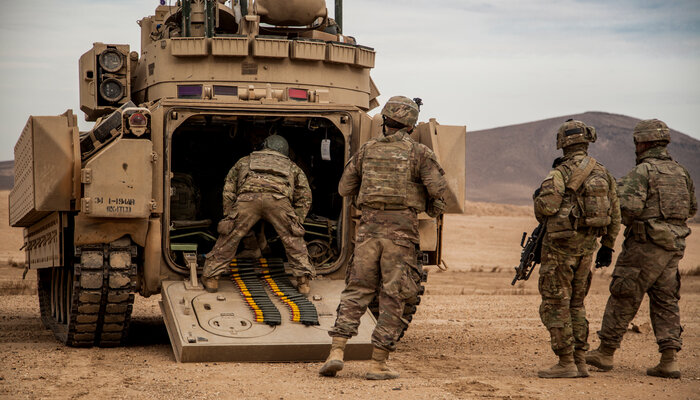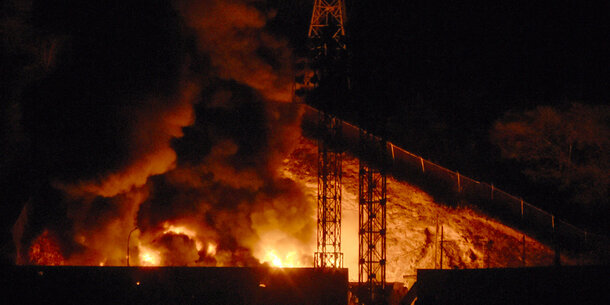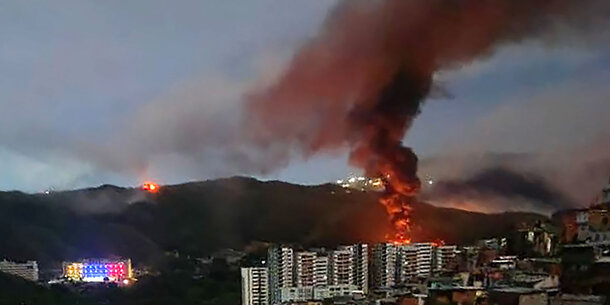This article first appeared at Lawfare.
For nearly two decades, the Department of Defense has used 10 U.S.C. § 127e, an obscure counterterrorism funding authority, to create and command proxy forces across Africa and Asia. The full list of these proxy forces is highly classified and yet unknown. But journalists like Nick Turse, who was recently featured on The Lawfare Podcast, have so far uncovered § 127e programs in Afghanistan, Cameroon, Egypt, Iraq, Kenya, Lebanon, Libya, Mali, Mauritania, Niger, Nigeria, Somalia, Syria, Tunisia, and Yemen.
While some of the countries in which the Department of Defense has run § 127e programs are unsurprising—the United States’s counterterrorism operations in Afghanistan, Iraq, Somalia, and Syria are no secret—other locales may raise eyebrows and constitutional concerns alike. What gives the Department of Defense the legal authority to run counterterrorism operations in Cameroon, Egypt, or Niger? Particularly when the operations in these three countries have reportedly involved sending § 127e proxy forces on security sweeps, raids, and kill-or-capture missions?
The Department of Defense may conduct its § 127e programs in the shadows, but the range of programs involving combat hints at how the Pentagon interprets its authority to use force. Section 127e does not itself authorize U.S. forces to conduct or direct proxy forces into hostilities; it can only amplify the United States’s capacity to conduct hostilities already permitted by an Authorization for Use of Military Force (AUMF) or Article II of the Constitution, which confers on the president an inherent authority to use force in self-defense. Working backward from independent reporting on § 127e, we can infer how the 2001 AUMF and Article II have been used. And we can conclude that these authorities may have been stretched beyond the executive branch’s representations to Congress and the public.
Section 127e
Initially enacted as a provisional authority in 2004 and subsequently codified in 2016, § 127e allows U.S. forces to “provide support” to foreign militaries, paramilitaries, and private individuals that are “supporting” U.S. counterterrorism operations.
The kinds of support that U.S. forces may give and receive are not defined in § 127e. But the Department of Defense sought § 127e from Congress so that U.S. forces would have the ability to recruit, train, equip, and pay the salaries of foreign militaries, paramilitaries, and private individuals that would assist the United States in combating terrorism. According to Maj. Gen. J. Marcus Hicks, the former head of Special Operations Command Africa, putting these partners on payroll would give U.S. forces “full incentive authority” over them and enable U.S. forces to “command and control” them on missions. In short, § 127e was intended to be used, and has been used, to create proxy forces who pursue military objectives alongside of and on behalf of U.S. forces.
Despite the law’s lack of clarity on permissible types of “support,” § 127e does not allow the Department of Defense to use its proxy forces however it would like. It requires these forces to facilitate “authorized ongoing military operations … to combat terrorism.” In other words, § 127e is not itself a legal authorization for operations. It is merely a tool for conducting operations, through and alongside proxy forces, pursuant to separate authorities.
The two authorities that allow the Department of Defense to conduct counterterrorism operations involving combat are the 2001 AUMF and the president’s inherent powers under Article II of the Constitution. As a part of my research into § 127e, Department of Defense officials and congressional staffers alike said that § 127e programs involving combat—including combat directed by U.S. forces but conducted solely by foreign proxies—should be based on one or both authorities. Because of this relationship, we can use reporting on § 127e proxy forces to better understand the Department of Defense’s working interpretation of the AUMF and Article II.
2001 AUMF
The 2001 AUMF is the overarching authorization for the so-called war on terror. Enacted just days after Sept. 11, the AUMF permits the president to “use all necessary and appropriate force” against those who “planned, authorized, committed, or aided the terrorist attacks.”
On its face, this language would appear to limit the targets of authorized military operations to al-Qaeda and the Taliban. But successive administrations have argued that the AUMF sweeps more broadly, covering not only al-Qaeda and the Taliban but also their “associated forces.” Thus, al-Qaeda’s allies and splinter groups like al-Shabab and the Islamic State of Iraq and Syria (ISIS) can fall within the AUMF’s ambit.
The executive branch has long maintained that it takes a careful and limited approach to designating new associated forces—a decision with the potential to extend the geographic scope and duration of the war on terror. Since the Obama administration, officials have assured Congress and the public that all associated forces must meet two criteria: (a) that they are an organized, armed group that has entered the fight alongside al-Qaeda or the Taliban and (b) that the group has engaged in hostilities against the United States and its coalition partners. According to these officials, a group is not an associated force, and covered by the AUMF, simply because it has aligned itself with al-Qaeda or because it commits an act of terrorism.
Pursuant to this two-pronged test, the Obama administration reported that it had designated six groups as associated forces: al-Shabab, ISIS, al-Qaeda in the Arabian Peninsula (AQAP), al-Qaeda in Libya, al-Qaeda in Syria, and al-Qaeda and Taliban allies in Afghanistan. The Trump administration later reported the same list of associated forces, though al-Qaeda in Libya was expanded to al-Qaeda in the Islamic Maghreb (AQIM). As recently as July 2019, the Department of State’s legal adviser repeated this list in congressional testimony.
The trouble is, the Department of Defense’s § 127e programs have countered groups well beyond al-Qaeda, the Taliban, and these six listed forces. Section 127e proxy forces in Cameroon were used to hunt members of Boko Haram. In Egypt, they were used to target members of the Islamic State – Sinai Province. Similarly, § 127e proxy forces in Niger were assigned a kill-or-capture mission for a leader of the Islamic State in the Greater Sahara. And in Somalia, § 127e proxy forces have been directed to combat an ISIS affiliate not on the executive branch’s short list of groups covered by the AUMF.
Are these groups undisclosed associated forces? Perhaps. As a part of my research into § 127e, a former Department of Defense official recounted that a “cottage industry of senior lawyers [made] sure that every named group, as they morphed, … [got] on the list” and that the “list of names morphed weekly.” A closer read of the Obama administration’s list of associated forces, too, shows that the administration enumerated only those groups against which the military was “currently taking direct action.” Although lawmakers and advocates have generally understood this list as a comprehensive accounting of associated forces, groups formerly targeted under the AUMF, as well as those targeted “indirectly” through § 127e proxy forces and other partners, may have been omitted.
Alternatively, it is possible these groups are viewed as indistinguishable from ISIS itself. In 2015 —a year after the launch of the Cameroonian § 127e program—the leader of Boko Haram pledged allegiance to ISIS. And the Islamic State – Sinai Province, Islamic State in the Greater Sahara, and Islamic State in Somalia are self-evidently ISIS affiliates.
That said, if successive administrations have taken a broad view of what constitutes ISIS, that would mark a consequential departure from past practice regarding al-Qaeda. Al-Qaeda affiliates like AQAP and AQIM had to be separately designated, forcing the executive branch to consider the threat posed by each group. Without a separate designation process for ISIS affiliates, the executive branch could bypass the two-pronged approach and pursue adversaries that have never posed a risk to the United States and its allies. It could target groups that have pledged allegiance to ISIS in countries as far-flung as Mozambique and the Philippines. The war on terror could stray further still from the text and purpose of the AUMF: ensuring accountability for and preventing future attacks from the perpetrators of Sept. 11.
Article II of the Constitution
In addition to the 2001 AUMF, the executive branch’s broad notion of Article II authority may support § 127e programs involving combat. Under Article II of the Constitution, the president has an inherent authority to use force to “repel sudden attacks” against U.S. persons and territory, even without congressional authorization. Since the Cold War, executive branch lawyers have played fast and loose with what this authority entails and when it can be used. Executive branch lawyers have crafted capacious theories of “unit” and “collective” self-defense. These theories can easily lead to combat when combined with aggressive implementations of the Department of Defense’s authorities for training foreign partners. Executive branch lawyers have also argued that the president may use force “in defense of important national interests,” a theory of Article II power that has few limiting principles.
Throughout the war on terror, Congress has enacted various authorities under which the Department of Defense may teach, provide weapons to, or repair weapons for foreign partners. Some of these authorities, like the “global train and equip” authority at 10 U.S.C. § 333, afford the department wide latitude to select partners and decide how they will receive assistance. The department may provide such assistance even when its partners are fighting local adversaries that U.S. forces have no legal authority to target. Although programs under these authorities are nonoperational and should take place on a base rather than in the field, the department’s decisions about whom it will train and where its bases are located can result in U.S. forces encountering their partners’ adversaries—and then invoking unit or collective self-defense.
Unit self-defense permits U.S. forces to engage in combat to respond to actual or imminent attacks without first seeking congressional authorization. To be sure, U.S. forces have the authority to protect themselves when deployed. But the Department of Defense’s practice of running training programs out of “forward operating bases” can make unit self-defense look more offensive than defensive. These are smaller bases that U.S. forces on training assignments may set up in “volatile” areas, perhaps for easy access to trainees who are actively combating local adversaries. Unsurprisingly, U.S. forces at such bases have occasionally come under attack or ended up exchanging fire themselves. It is doubtful that the Constitution allows the Department of Defense to rely on a claim of “self-defense” to bypass Congress when it has deliberately positioned U.S. forces in locations where it is predictable that they will come under fire.
Collective self-defense, which permits U.S. forces to engage in combat to protect partners designated by the president or secretary of defense, is an even more troubling theory. It allows the pursuit of foreign partners’ adversaries even when those adversaries pose no threat—immediate or otherwise—to U.S. forces. Cut from whole cloth, collective self-defense has no basis in the Constitution’s text, design, or history. Moreover, the theory could allow the Department of Defense to bypass Congress’s role in deciding where and against whom the United States is at war: The department could simply partner with foreign forces who are fighting an adversary not contemplated by Congress and then invoke collective self-defense to counter that same adversary.
Public reporting shows that unit and collective self-defense could expand, and in some instances already has expanded, the reach of U.S. combat in countries with known § 127e programs. Department of Defense documents from 2014, obtained by the Intercept through the Freedom of Information Act, show that the department maintained at least 34 forward operating bases in Africa. These bases were concentrated in the Sahel and Horn of Africa, two regions where U.S. forces are known to have encountered adversaries and run an array of § 127e programs.
Moreover, because unit and collective self-defense permit U.S. forces to engage in combat without congressional approval, a § 127e program based on one of these theories could involve hostilities against groups not covered by the 2001 AUMF. A recent report from the International Crisis Group recounts that U.S. combat against al-Shabab began in earnest at least one year before al-Shabab was identified as one of al-Qaeda’s associated forces; the Department of Defense’s work with Somali partners led to broad exercises of unit and collective self-defense against al-Shabab in 2015, even though the group was not yet a legitimate target under the 2001 AUMF.
If § 127e activity against groups like the Islamic State – Sinai Peninsula and Boko Haram has in fact been based on unit or collective self-defense, that would evince a pressing need for congressional oversight, not only of § 127e programs but of train and equip programs as well. Although these training programs do not themselves entail operations, let alone combat, they can serve as a springboard for combat beyond what Congress has authorized.
It bears mention that, even without forward operating bases or aggressive training programs, executive branch lawyers can invoke Article II authority by claiming that U.S. combat in a particular country is necessary for defending important national interests. The national-interest theory has been used to justify a range of congressionally unauthorized interventions that well precede the war on terror. And during the war on terror, the theory was used to target ISIS in Iraq, before executive branch lawyers assessed that the AUMF applied to the group. An operation based on the national-interest theory could, at least notionally, support a § 127e program involving combat. None of the Department of Defense officials or congressional staffers I interviewed for my forthcoming report were aware of § 127e activity that had taken place on this basis. But the potential for proxy warfare—based on little more than the executive branch’s sense that the national interest is at stake—should prompt Congress to weigh in on this controversial theory.
Mistaken Interpretations of the Law
In addition to overbroad readings of the 2001 AUMF and Article II, a third possibility could explain the startling range of § 127e programs involving combat: human error. The text of § 127e is no model of clarity. It is circular and vague, and members of Congress have publicly struggled to get a handle on what the provision allows. In private, executive branch officials have also struggled to understand § 127e.
In interviews for my research on § 127e, former and current Department of Defense officials lamented that there had been “misunderstandings” about the authority. One former official described “confusion about the nature of the authority” within elements of the departments of Defense and State. In particular, he cited the “perception that § 127e was a full package authority,” rather than a funding provision that could not be exercised without an external authority like the 2001 AUMF or Article II. Even though § 127e does not itself authorize operations, it is all too possible that it has at times been used as the basis for hunting high-value targets.
On top of mistakes in interpreting § 127e, mistakes in interpreting execute orders or EXORDs could result in combat not justified by an AUMF or Article II. EXORDs memorialize the Department of Defense’s “authorized ongoing military operations” and can implement the 2001 AUMF or Article II. All § 127e programs should support or facilitate the operations described in an EXORD. The problem, though, is that EXORDs can be broadly drafted and may not specify the authority under which they are promulgated. This can leave U.S. forces uncertain about which adversaries they can pursue, whether themselves or through § 127e proxies.
For its part, Congress has tried to get a full list of the Department of Defense’s EXORDs, as well as the specific EXORDs at issue in the 2017 Tongo Tongo ambush—an attack on U.S. forces in Niger who had been tasked with assisting § 127e proxy forces on a kill-or-capture mission. The White House has resisted turning over the full list of EXORDs, and the department refused to give Congress the Tongo Tongo EXORDs for more than a year after the incident.
Without more rigorous congressional oversight of § 127e and the EXORDs on which the authority relies, as well as better cooperation from the executive branch to enable such oversight, the possibility of mistakes—including mistakes that violate the constitutional order wherein Congress decides where and against whom the country is at war—will persist.
***
Whichever of these theories explains the proliferation of § 127e programs involving combat, the fact that we’re left speculating about the executive branch’s interpretation of its authority to use force is unsettling. The public should not have to try to reverse-engineer the scope of or basis for where the country is at war from scraps of information about § 127e proxy forces.
Simply put, the war on terror has expanded well past what Congress authorized in 2001. Today, the American public and much of Congress are unaware of the full scope of U.S. hostilities to counter terrorism abroad. These hostilities raise serious constitutional questions and threaten a crisis of democratic accountability. This will continue to be the case unless and until Congress reforms or repeals § 127e and the 2001 AUMF and enacts new legislation to rein in presidential war-making.



